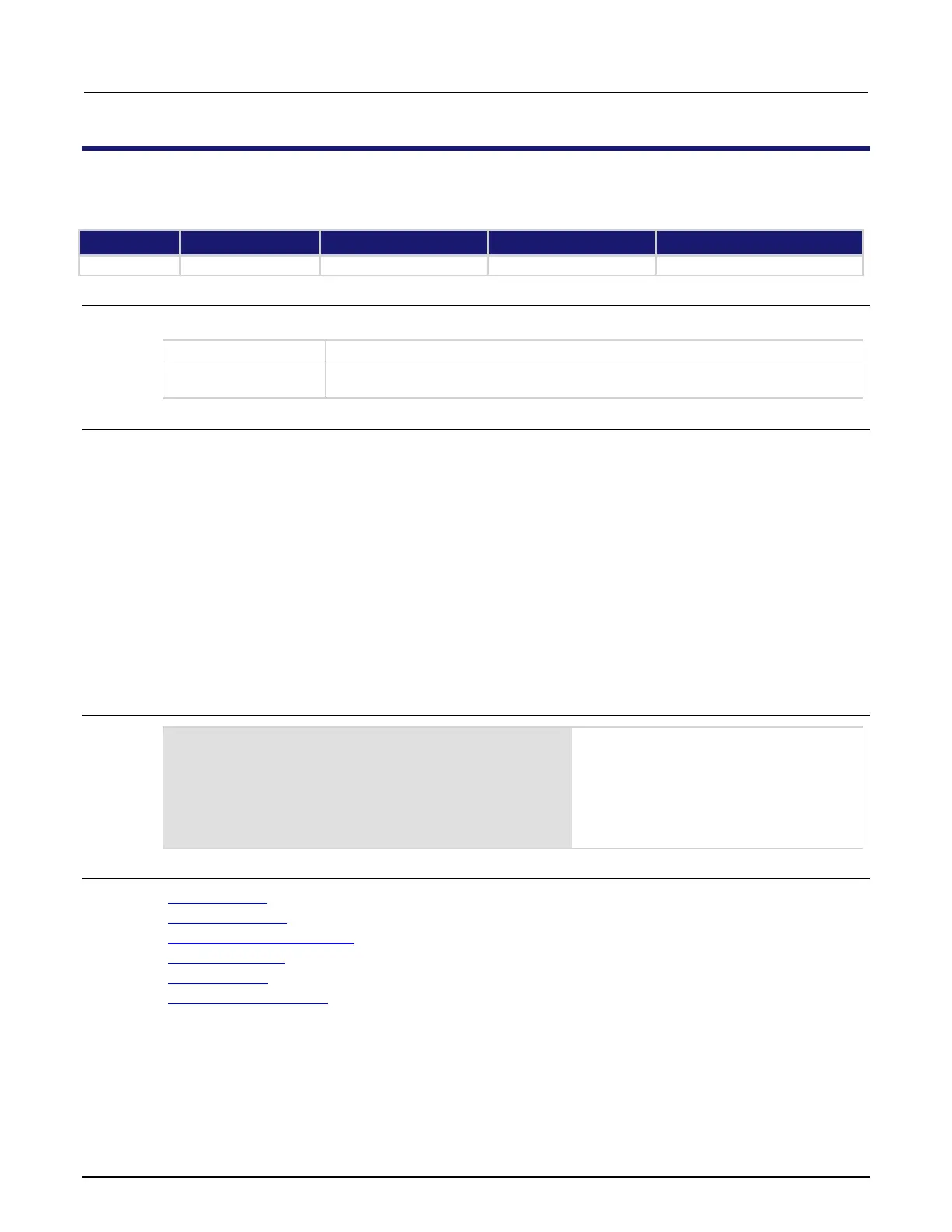Section 9: TSP command reference Series 2600B System SourceMeter® instrument Reference Manual
9-20 2600BS-901-01 Rev. F/August 2021
bufferVar.capacity
This attribute sets the number of readings a buffer can store.
Usage
bufferCapacity = bufferVar.capacity
The maximum number of readings the buffer can store
The reading buffer; can be a dynamically allocated user-defined buffer or a dedicated
reading buffer
Details
This read-only attribute reads the number of readings that can be stored in the buffer.
For dedicated reading buffers, all buffer attributes are saved to nonvolatile memory only when the
reading buffer is saved to nonvolatile memory.
The capacity of the buffer does not change as readings fill the buffer. A dedicated reading buffer that
only collects basic items can store over 140,000 readings. Turning on additional collection items,
such as timestamps and source values, decreases the capacity of a dedicated reading buffer (for
example, smua.nvbuffer1), but does not change the capacity of a user-defined dynamically
allocated buffer. A user-defined dynamically allocated buffer has a fixed capacity that is set when the
buffer is created.
See the smuX.nvbufferY attribute for details on accessing dedicated reading buffers. See the
smuX.makebuffer() function for information on creating user-defined dynamically allocated
reading buffers.
Example
bufferCapacity = smua.nvbuffer1.capacity
print(bufferCapacity)
Reads the capacity of dedicated reading
buffer 1 (source-measure unit (SMU)
channel A).
Output:
1.49789e+05
The above output indicates that the buffer
can hold 149789 readings.
Also see
Reading buffers (on page 3-1)
smuX.makebuffer() (on page 9-215)
smuX.measure.overlappedY() (on page 9-229)
smuX.measure.Y() (on page 9-233)
smuX.nvbufferY (on page 9-235)
smuX.trigger.measure.Y() (on page 9-268)

